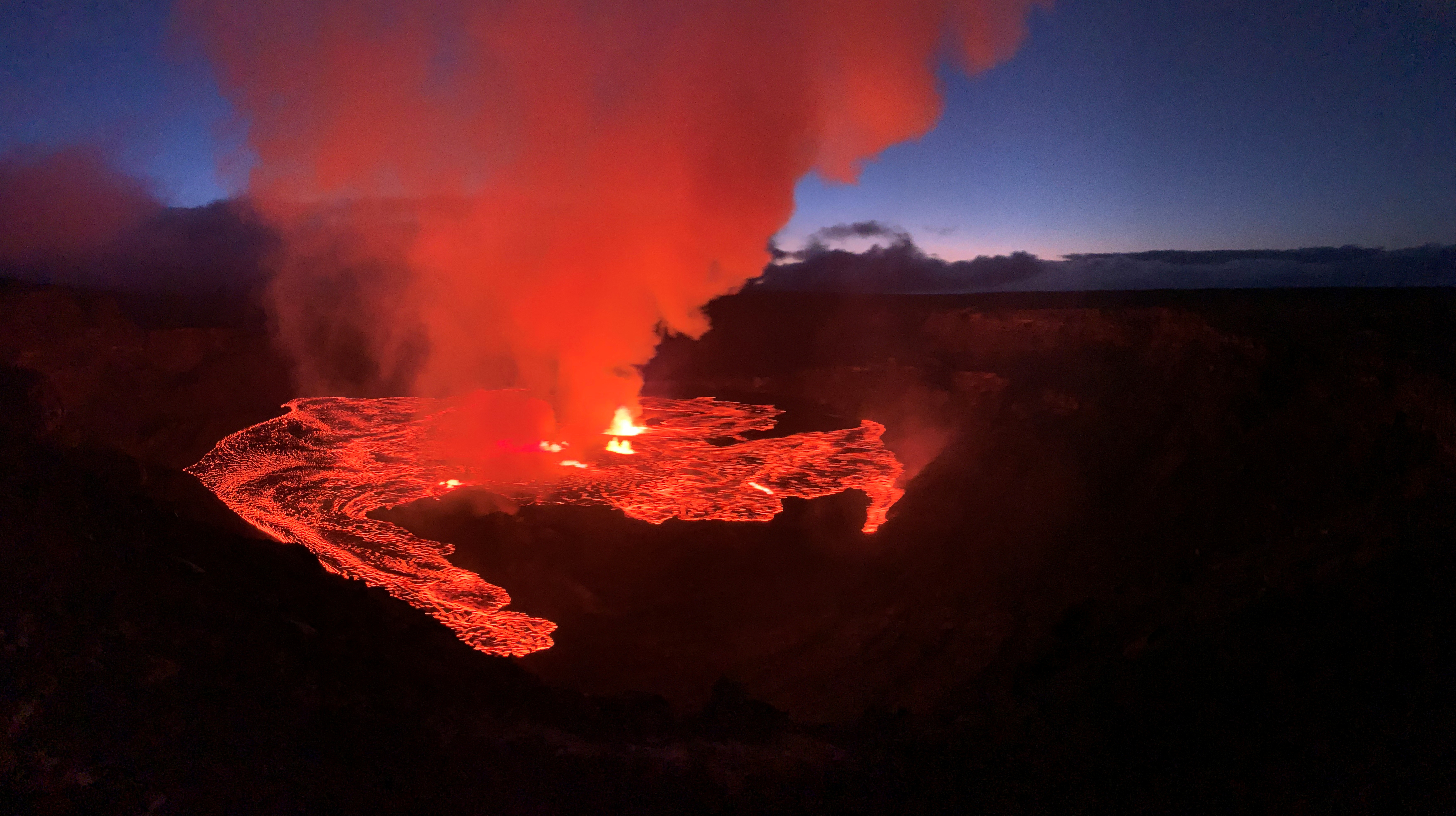 Hawaii’s Kilauea Volcano, known for its frequent eruptions, has been showing signs of activity recently with an average of 30 earthquakes per hour. Despite these seismic activities, the volcano has not yet erupted.
Hawaii’s Kilauea Volcano, known for its frequent eruptions, has been showing signs of activity recently with an average of 30 earthquakes per hour. Despite these seismic activities, the volcano has not yet erupted.
Scientists and geologists have been closely monitoring the situation, trying to determine what could be causing the increased earthquake activity. According to the United States Geological Survey (USGS), the earthquakes are likely caused by the movement of magma beneath the surface.
The Kilauea Volcano, located on the Big Island of Hawaii, is one of the most active volcanoes in the world. It has been erupting continuously since 1983, with occasional periods of increased activity. The volcano’s last major eruption occurred in 2018, causing widespread destruction and forcing thousands of people to evacuate their homes.
Despite the potential for a major eruption, experts believe that the current seismic activity does not necessarily indicate an imminent eruption. They point out that earthquakes can occur without leading to an eruption, and that it is important to gather more data and closely monitor the volcano’s behavior before making any predictions.
In recent years, advances in technology have greatly improved scientists’ ability to monitor and study volcanic activity. Instruments such as seismometers, gas analyzers, and thermal cameras allow researchers to gather valuable data and gain a better understanding of how volcanoes behave.
One of the main challenges in studying volcanoes is predicting when they will erupt. Volcanic eruptions are complex events influenced by a variety of factors, including magma composition, gas content, and the structure of the volcano itself. Scientists use a combination of monitoring techniques and computer models to try and forecast eruptions, but it remains a challenging task.
Understanding volcanic activity is not only important for the safety of local communities but also for broader scientific research. Volcanoes play a crucial role in shaping the Earth’s surface and atmosphere. They release gases and particles into the air, which can have both local and global impacts on climate and air quality.
In conclusion, while the increased earthquake activity at Hawaii’s Kilauea Volcano is a cause for concern, it does not necessarily indicate an imminent eruption. Scientists continue to closely monitor the volcano and gather data to better understand its behavior. The study of volcanic activity is a complex field, and advances in technology have greatly improved our ability to monitor and study these natural phenomena. By gaining a better understanding of volcanoes, scientists hope to improve their ability to predict eruptions and mitigate the risks they pose.

